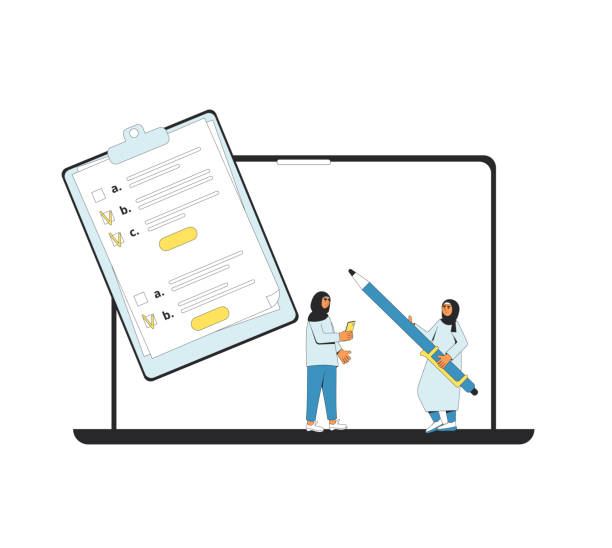Why Do We Need a Personal Website Design?
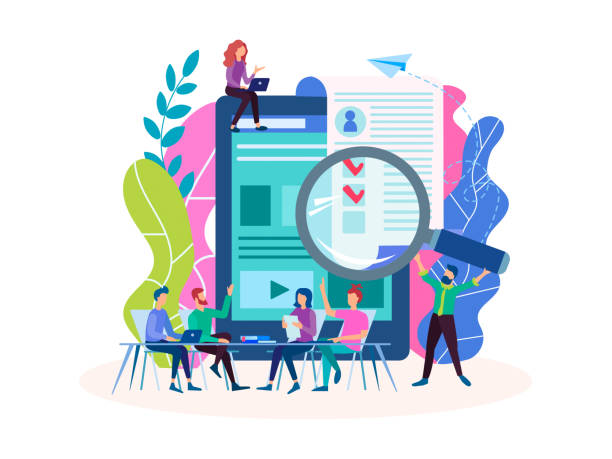
In today’s world, where digital and physical boundaries are intertwined, having a powerful online presence has become more important than ever.
#Personal_website_design is no longer a luxury choice, but a necessity for anyone who wants to build their personal brand, showcase their expertise, or simply share their content with the world.
A personal website acts like a digital business card that is always accessible and enables you to have complete control over narrating your story and showcasing your abilities.
This platform allows you to present your portfolio, resume, articles, and even personal thoughts in an organized and professional manner.
Personal branding through a website significantly increases your trust and credibility in the eyes of your audience, potential employers, or future collaborators.
Unlike social networks, whose rules and algorithms are constantly changing and over which you have no control, a personal website is your domain.
You own it and can make any desired changes to it.
Other advantages of personal website design include the ability to collect audience emails, create a database for loyal users, and enable direct and two-way communication with your audience.
This is especially crucial for freelancers, artists, writers, instructors, and anyone looking to advance their professional standing.
In fact, #creating_a_personal_website can open doors to new job opportunities and international collaborations, and solidify your credibility in your specialized field.
This platform distinguishes you from competitors and allows you to not only be seen but also to be remembered.
Losing potential customers due to an unprofessional website? Rasaweb is your answer! With our specialized corporate website design services:
✅ Enhance your business’s credibility and standing
✅ Experience more targeted customer acquisition
⚡ Act now to receive a free consultation!
Planning Stages for Personal Website Design
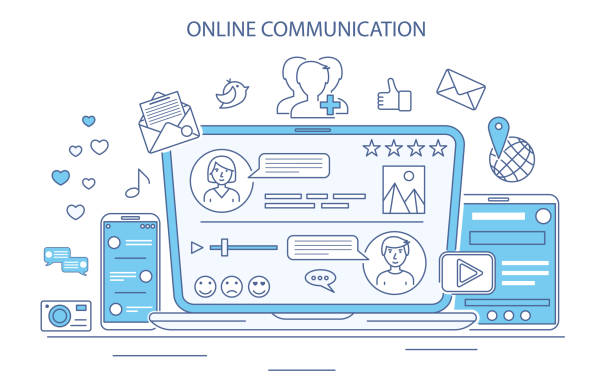
Before you delve into coding or template selection, the stage of meticulous planning for #personal_website_design is of great importance.
This initial step forms the foundation for your website’s success and prevents subsequent confusions.
First, you need to define the main goal of creating the website.
Do you want to build your online resume, display your artistic portfolio, launch a personal blog, or introduce your professional services? The answer to this question will determine the overall direction of your #personal_website_creation project.
Next, identify your target audience.
Who will visit your website? Industry professionals, employers, clients, or the general public? Knowing your audience helps you tailor the content, tone, and even the visual design of the site to their needs and expectations.
The next step is to gather and organize your content.
What information do you want to include on your website? Resume, portfolio, articles, images, videos? Prepare all these before starting the work.
Design the site structure or sitemap.
This map shows you what pages you will have and how they connect to each other.
A logical and user-friendly website structure improves user experience (UX) and also helps search engines better index your pages.
For example, you can consider pages for “About Me”, “Services/Skills”, “Portfolio/Showcase”, “Blog”, and “Contact Me”.
Finally, anticipate what functionalities you need for your website, such as a contact form, image gallery, comments section, or user registration capability.
This comprehensive planning not only assists you in the web design process but also ensures your personal website is exactly what you need.
Choosing the Right Platform for Your Personal Website
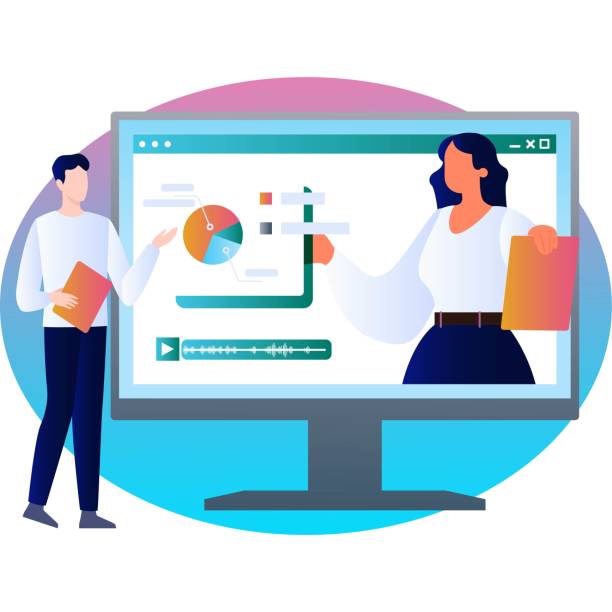
Choosing the right platform for #personal_website_design is one of the most important decisions on this path.
This choice directly impacts the development speed, flexibility, costs, and future capabilities of your website.
Today, various options are available, each with its own advantages and disadvantages.
#Content_management (CMS) platforms like WordPress are among the most popular choices for creating a personal website.
WordPress is suitable for a wide range of needs due to its high flexibility, countless themes and plugins, and large user community.
This platform is usable by both beginners and professional developers.
Other options include website builders like Wix, Squarespace, and Weebly, which allow you to create your website using a drag-and-drop interface without needing coding knowledge.
These services are ideal for those looking for quick and easy setup, but they may have limitations in terms of flexibility and customization.
For developers and those who prefer full control and optimal performance, using frameworks (like React, Angular, Vue.js) or even coding from scratch (with HTML, CSS, JavaScript) is a more professional option, but requires higher technical knowledge.
Ultimately, the decision for platform selection should be based on your goals, budget, technical knowledge level, and desired degree of control.
A successful personal website design begins with choosing the right infrastructure.
Below is a brief comparison of common platforms.
| Platform | Advantages | Disadvantages | Suitable for |
|---|---|---|---|
| WordPress | High flexibility, many plugins, large community, SEO-friendly | Requires hosting and maintenance, relatively complex for beginners | Bloggers, small businesses, anyone needing full control |
| Wix / Squarespace | Easy to use, no coding required, good support, beautiful templates | Limited customization, monthly fee, difficult site transferability | Beginners, artists, photographers, small businesses without complex needs |
| Manual Coding (HTML/CSS/JS) | Full control, high optimization, excellent performance | Requires high technical knowledge, time-consuming | Web developers, web designers, specific and custom projects |
Content Strategy and Engaging Content Creation

After platform selection and initial planning, it’s time for one of the most crucial stages in #personal_website_design: content strategy and engaging content creation.
Content is the beating heart of any website, and without it, even the most beautiful designs will be ineffective.
Your content must be exactly what the audience is looking for and create added value for them.
First, define the types of content you want to provide: blog articles, portfolios, resumes, service descriptions, image galleries, or videos.
Each section of your website should have a clear message and be presented in an engaging and understandable manner.
For example, in the portfolio section, don’t just include final work photos; also describe the project execution process, challenges, and solutions to give the audience a more complete view of your skills.
Content creation must be continuous and high-quality.
For the blog, choose topics related to your expertise that are both interesting to you and answer potential audience questions.
Using appropriate keywords and adhering to SEO principles in your content significantly helps your website be seen in search engines.
#Personal_website_design is not limited to visual beauty; it must be such that it showcases your valuable content in the best possible way.
Your content’s tone should also align with your personal brand: formal, friendly, educational, or analytical.
Use high-quality images and videos to break up text blocks and increase visual appeal.
Remember that up-to-date and fresh content not only keeps audiences interested but also sends positive signals to search engines, leading to better rankings for your website in search results.
Is your online sales not as expected? With Rasaweb, permanently solve the problem of low sales and poor user experience!
✅ Increase visitor-to-customer conversion rate
✅ Create an enjoyable user experience and boost customer trust
⚡ Act now to receive a free consultation!
Principles of Visual Design and User Experience in a Personal Website
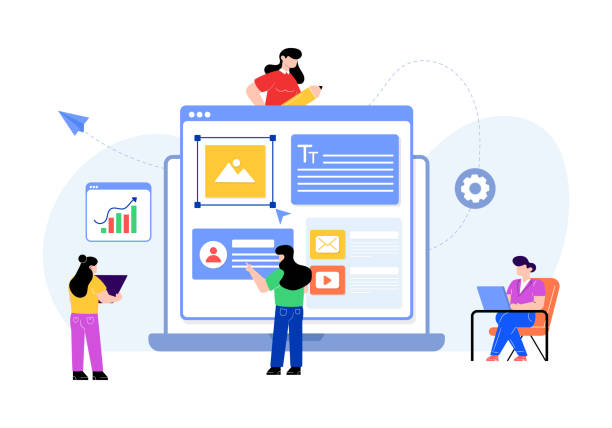
After content, visual design and user experience (UX) are two other main pillars in #personal_website_design that directly impact your site’s success and effectiveness.
A beautiful and user-friendly design encourages visitors to stay and explore the site further, while a poor design can cause them to quickly leave your site.
In the field of personal website design, simplicity and minimalism are often the best approach.
Avoid excessive clutter and utilize whitespace to give design elements room to breathe.
Choosing a suitable color palette that aligns with your personal brand is of great importance.
Colors can convey different emotions; therefore, choose carefully.
Typography (font selection) also plays a significant role in site readability and aesthetics.
Choose fonts that are readable for both headings and main texts, and avoid excessive font variety.
Responsive Design for websites is essential.
This means your site should display correctly on various screen sizes, including mobile and tablet.
User experience means ease of use of the site.
Navigation should be clear, logical, and easy, so users can readily access what they need.
Site loading speed is also an important factor in UX.
Slow websites frustrate users and negatively impact SEO rankings.
#Creating_a_personal_website, considering these principles, not only makes it visually attractive but also transforms it into a powerful tool for effective communication with your audience.
Don’t forget that the main goal of a personal website is to provide the best possible experience for the visitor.
Optimizing a Personal Website for Search Engines (SEO)
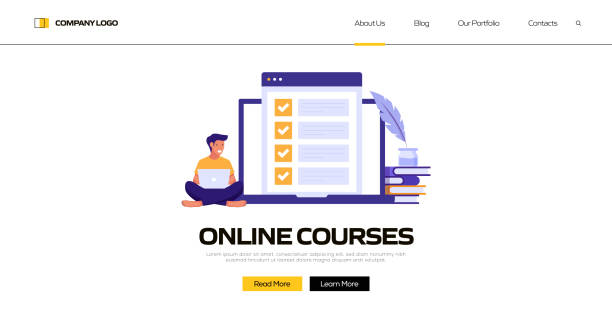
Even if you have the most beautiful and complete #personal_website, without visibility in search engines like Google, your efforts will be futile.
Search Engine Optimization (SEO) is a crucial process that helps increase your site’s visibility in search results.
This process includes various techniques that begin from the #personal_website_design stage and continue even after launch.
First, conduct Keyword Research.
Identify the keywords your target audience uses to find services or content similar to yours.
Naturally incorporate these keywords into your website’s titles, subtitles, texts, and image descriptions.
Avoid keyword stuffing, as this not only harms user experience but is also penalized by search engines.
#Technical_SEO is also an important part of this process.
Ensure your website has a logical URL structure, XML sitemaps, a robots.txt file, and an SSL certificate (HTTPS).
Page Speed is also an important ranking factor; optimize images, use browser caching, and eliminate unnecessary code.
Additionally, the responsiveness of the site for display on various devices, especially mobile, is highly important, as Google prioritizes mobile-friendly websites.
Internal Linking and External Linking also aid SEO.
Linking to relevant pages on your own site, as well as receiving links from other reputable sites, increases your site’s credibility with search engines.
Finally, high-quality and up-to-date content is the most important factor in SEO.
Content that addresses user needs and answers their questions will naturally achieve a better ranking.
Continuous Website Maintenance and Updates
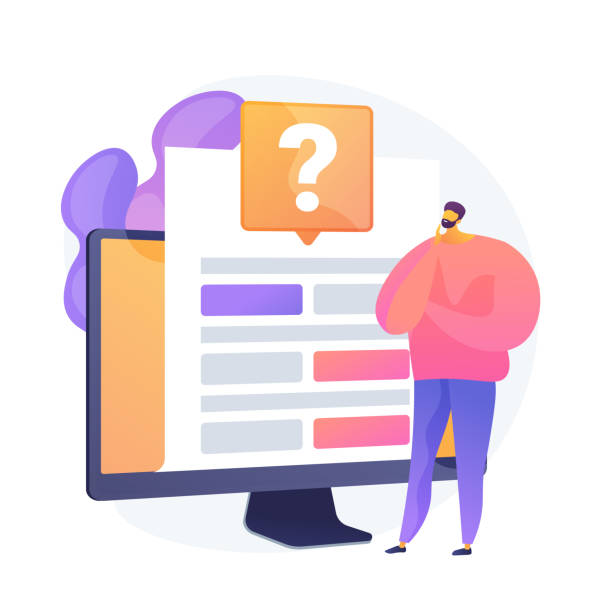
The #personal_website_design process doesn’t end with its launch; rather, it’s the beginning of a longer journey called continuous maintenance and updates.
A dynamic and live website requires continuous attention to remain both secure and appealing to the audience in terms of content.
The first aspect of maintenance is #technical_site_updates.
If you use content management systems like WordPress, it is necessary to regularly update the system’s core, themes, and plugins.
These updates usually include security enhancements, bug fixes, and the addition of new features.
Failure to perform updates can make your site vulnerable to cyberattacks or lead to performance issues.
#Website_security is a serious issue that requires special attention; use strong passwords, utilize reputable security plugins, and regularly back up your site’s data.
Website content also needs updating.
Review old articles and add new information if necessary.
Find and fix broken links.
Adding new and relevant content to the blog or portfolio section not only helps attract new audiences but also signals to search engines that your site is active and dynamic.
This can help improve your SEO ranking.
Monitoring website performance using tools like Google Analytics is also highly important.
By analyzing visitor data, you can understand which pages are more popular, how users navigate your site, and what content generates the most engagement.
This information helps you make more informed decisions to improve your user experience and content strategy.
Proper maintenance guarantees the long-term stability and growth of your personal website.
| Activity | Frequency | Description |
|---|---|---|
| Site Backup | Weekly/Monthly | Creating copies of site files and database |
| Update CMS, Theme, and Plugins | Monthly/Quarterly | Install the latest versions for better security and performance |
| Check for Broken Links | Monthly | Find and fix inactive links |
| Site Security Check | Weekly/Monthly | Scan for malware and vulnerabilities |
| Content Update | Continuous (Weekly/Monthly) | Adding new articles, updating old information |
| Monitor Site Performance | Continuous | Check site speed, traffic, and errors |
Monetization Opportunities from a Personal Website
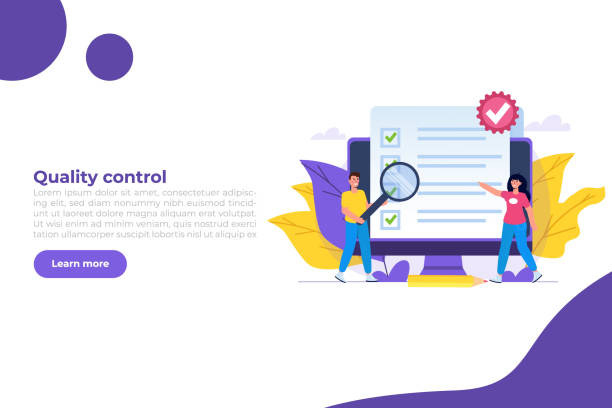
Did you know that #personal_website_design can go beyond a tool for showcasing expertise and become a source of income? This question occupies the minds of many, and the answer is absolutely positive! Although the main goal of many personal websites is branding and portfolio display, with proper planning and implementation of specific strategies, it can be transformed into a revenue-generating platform.
One of the most common methods is content marketing and selling digital products or services.
If you specialize in a field, you can sell e-books, online courses, ready-made templates, or even audio and video files related to your area of activity through your website.
This method allows you to convert your knowledge into money.
Another method is #affiliate_marketing.
In this method, you promote others’ products or services on your website and receive a commission for each sale or visit through your link.
This can include introducing tools, books, or services that you yourself use and trust.
Displaying advertisements through networks like Google AdSense is also a way to earn income, although this method usually requires high traffic to generate significant revenue.
Also, for professionals, providing consultation or freelance services through a website can be very profitable.
Your website acts as a professional storefront that attracts potential clients.
Finally, financial support (Donations) from loyal audiences can also be a small but valuable source of income, especially for bloggers and content creators.
The decision to monetize a personal website entirely depends on your goals and strategy, but it offers diverse possibilities.
Is your e-commerce site ready to attract maximum customers and increase sales? Rasaweb transforms your online business with modern and efficient e-commerce website designs.
✅ Increased speed and improved SEO
✅ Excellent user experience on mobile and desktop⚡ Get a free e-commerce website design consultation from Rasaweb!
Successful Personal Website Design Examples
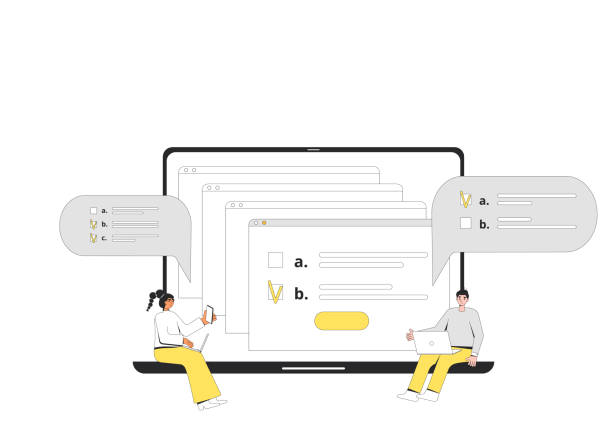
To draw inspiration on the path of #personal_website_design, looking at successful and creative examples in this field can be very useful.
These websites are not only visually appealing but also effectively meet their owners’ goals and offer an outstanding user experience.
One of the best examples is the #online_portfolio websites of graphic designers, web developers, and photographers.
These individuals often showcase their creativity in their personal website design.
For example, a website introducing a graphic designer typically features unique layouts, bold use of color and typography, and stunning visual galleries of their projects.
They understand that their website is the first thing that showcases their talent.
On the other hand, successful personal blogs are also brilliant examples of #personal_website.
These blogs usually focus on high-quality and specialized content in a specific area, such as technology, health, travel, or art.
They maximize content readability through simple and functional design, and enhance audience interaction with features like comment sections and email subscription forms.
Websites of artists or musicians also often feature powerful visual designs, image and audio galleries, and sections for introducing works and announcing events.
These sites clearly demonstrate how a personal website can reflect an individual’s identity and creativity.
A crucial lesson to learn from these examples is that your personal website should be a reflection of your personality, skills, and goals.
These sites prove that with a bit of creativity and attention to detail, a unique and impactful online platform can be built that not only presents your content in the best possible way but also remains memorable to visitors.
The Future of Personal Websites and Concluding Remarks
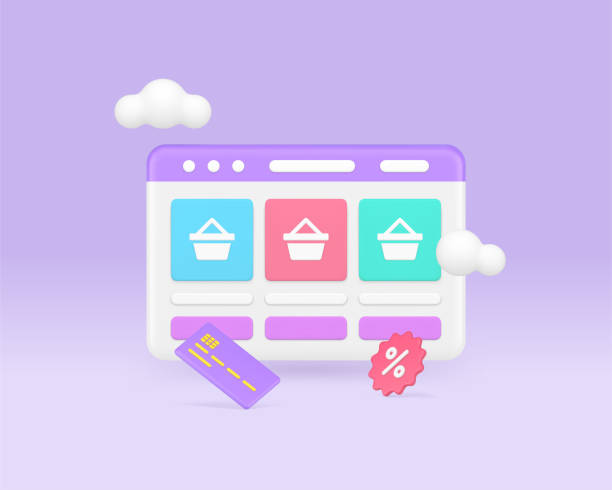
With the dizzying pace of technological advancement, the important question is: Where is the future of #personal_website_design heading? Personal websites are evolving, and trends show that Artificial Intelligence (AI) and Virtual/Augmented Reality (VR/AR) will play a more prominent role in them.
Imagine personal websites with AI-powered chatbots that can answer user questions or even personalize content.
Or 3D art galleries that allow you to explore artworks in a virtual environment.
These technologies can elevate the user experience to an entirely new level and enrich interaction with a #personal_website.
Also, attention to #data_privacy and cybersecurity will become more important than ever.
With increasing concerns about personal information, websites that transparently adhere to privacy policies and have high security will be more trustworthy.
Accessibility is another important trend.
Designing websites that are also usable for people with disabilities is not only a social responsibility but also encompasses a wider target market.
Ultimately, personal website design will continue to revolve around #personal_branding, showcasing expertise, and establishing direct communication with the audience.
The importance of storytelling and authenticity in content will increase.
Instead of merely presenting facts, successful personal websites will narrate inspiring and credible stories of the individuals behind them.
Therefore, while new technologies are emerging, the fundamental principles of a successful personal website – high-quality content, user-friendly design, and a clear strategy – will remain constant.
By considering these points, you can create a personal website that is not only suitable for today but also ready for the future.
Frequently Asked Questions
| Question | Answer |
|---|---|
| What is a personal website? | A personal website is an online platform that an individual creates to display their information, resume, portfolio, interests, or ideas. This website serves as a digital business card and a place for personal branding. |
| Why do I need a personal website? | Having a personal website helps you establish a professional online presence, showcase your skills and experiences, connect with your audience, find new job opportunities, and enhance your personal credibility. |
| What content should I include on my personal website? | Typical content includes: About Me page (biography, education, experience), resume, portfolio (projects, articles, designs), blog (posts, insights), and contact information. |
| What are the basic steps to create a personal website? | The steps include: 1. Defining goal and audience 2. Choosing a domain name 3. Selecting hosting 4. Choosing a platform (e.g., WordPress or coding) 5. Designing and structuring 6. Content creation 7. SEO and optimization 8. Launch and maintenance. |
| Should I use a Website Builder or code it myself? | If you don’t have coding knowledge or are looking for a quick solution, website builders (like Wix, Squarespace) or CMSs (like WordPress) are good options. If you want full control and high flexibility and have technical knowledge, coding is the best way. |
| How important is design (appearance) for a personal website? | Website design is very important. A beautiful, user-friendly, and professional design ensures visitors have a good experience, stay longer on the site, and take your personal brand seriously. Poor design can have a negative impact. |
| What is Responsive Design and why is it important? | Responsive design means designing a website whose appearance and functionality automatically adapt to the screen size of the user’s device (desktop, tablet, mobile). This feature is crucial for ensuring a good user experience across all devices. |
| How can I choose a good domain name for my personal website? | The domain name should be relevant to your identity (usually your first and last name), short and memorable, easy to pronounce, and avoid excessive numbers or hyphens. Common extensions like .com or .ir are usually preferred. |
| What is Web Hosting? | Web hosting is space on an internet-connected server that stores your website files (like code, images, videos) and makes it accessible to users 24/7. Without hosting, your website will not be accessible. |
| How can I promote my personal website? | You can use social networks, search engine optimization (SEO), content marketing (blog writing), sharing links in email signatures, and networking with others in your field to promote your website. |
And other services from Rasaweb Advertising Agency in the field of advertising
Smart Marketplace: Revolutionize customer behavior analysis with marketing automation.
Smart Digital Advertising: A creative platform to improve user interaction by optimizing key pages.
Smart Marketing Automation: A creative platform to improve customer acquisition with custom programming.
Smart Marketing Automation: A dedicated service for increasing website traffic based on marketing automation.
Smart Sales Automation: Revolutionize customer acquisition with Google Ads management.
And over a hundred other services in online advertising, advertising consulting, and organizational solutions
Online Advertising | Advertising Strategy | Advertorials
Sources
Importance of a Personal Website
? Are you ready to transform your business in the digital space? Rasaweb Afarin Digital Marketing Agency, by providing comprehensive and specialized services, is your guide on the path to online brilliance. With years of experience, we help businesses establish a powerful and effective presence in the digital world.
From Search Engine Optimization (SEO) strategies and content marketing to responsive website design and targeted advertising campaigns, we cover all your digital needs. Our goal is to increase your visibility, attract more customers, and ultimately ensure the sustainable growth of your business.
By trusting the expertise of the Rasaweb Afarin team, you can confidently entrust the digital future of your business to us. We are committed to achieving the best results for you and ensuring that your brand shines in today’s competitive landscape. With Rasaweb Afarin, take a strong step towards great successes.
📍 Tehran, Mirdamad Street, next to Bank Markazi, Kazeroun Jonoubi Alley, Ramin Alley No. 6

